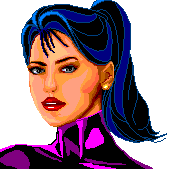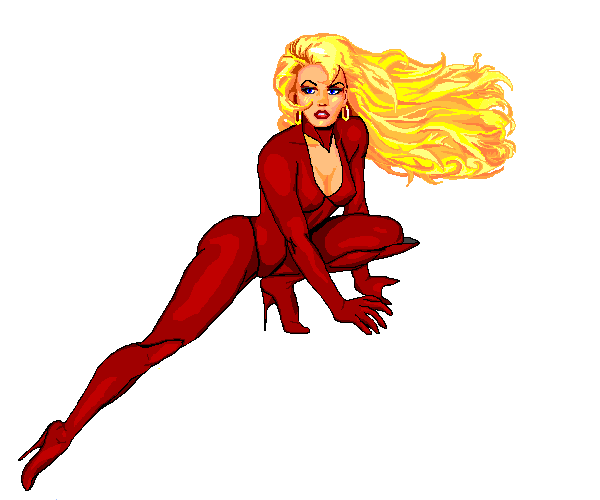The image on the left is from a Dave Stevens comic book cover of Sheena. It has wonderful energy, but it also provides a lot of shape despite using relatively few colors. Sometimes comic book art is a good starting point for comic book sketches (well, Duh!). You'll see that hairstyle on several Xora sketches, though it evolved a little as well. It is, however different from the very smooth look of the Olivia image I used for the basic pose. To transfer it, key features need to be redrawn since the scale and pose won't allow a straight cut and paste.
The key features include things like the lock on her forehead and on her cheek, the part, the wavy, complex shape to the mane, and the curls at the end. Notice how the locks taper continuously toward the ends. Even those in the mane do that, though others fill in behind so that the fan of her hair stays constant in width (height in this angle).
Also, regions of the hair show a 'family' relationship, not rigidly parallel, but variations about a common aspect. For example, the lines defining her hair as it comes from the part all curve up and over with a similar shape, yet no two lines are exactly parallel. This similar-but-not-identical set of lines shows a hair 'style' yet retains real-world variability - adding life and energy.
|
On the right is the finished design of Xora's hair (used in another pose, but it was what set the hair style). As you can see, her hair is a lot longer than Sheena's as interpreted by Dave Stevens. The ends of a hairstyle always look distinct, so what I did was cut the ends of Sheena's hair and paste it in further away, then fill in between. This is done by drawing it freehand, but following the 'rules'. All locks continuously taper to the ends, with more showing behind as any individual ones terminate. Lines are always curving, and 'families' of lines curve in similar but not quite parallel ways, which provides the tapering look. Since this is blonde hair, there are actually 8 colors (instead of the 4 I use for black hair), but that complexity can always be 'lost' later so working in blonde first provides the most options.
|















